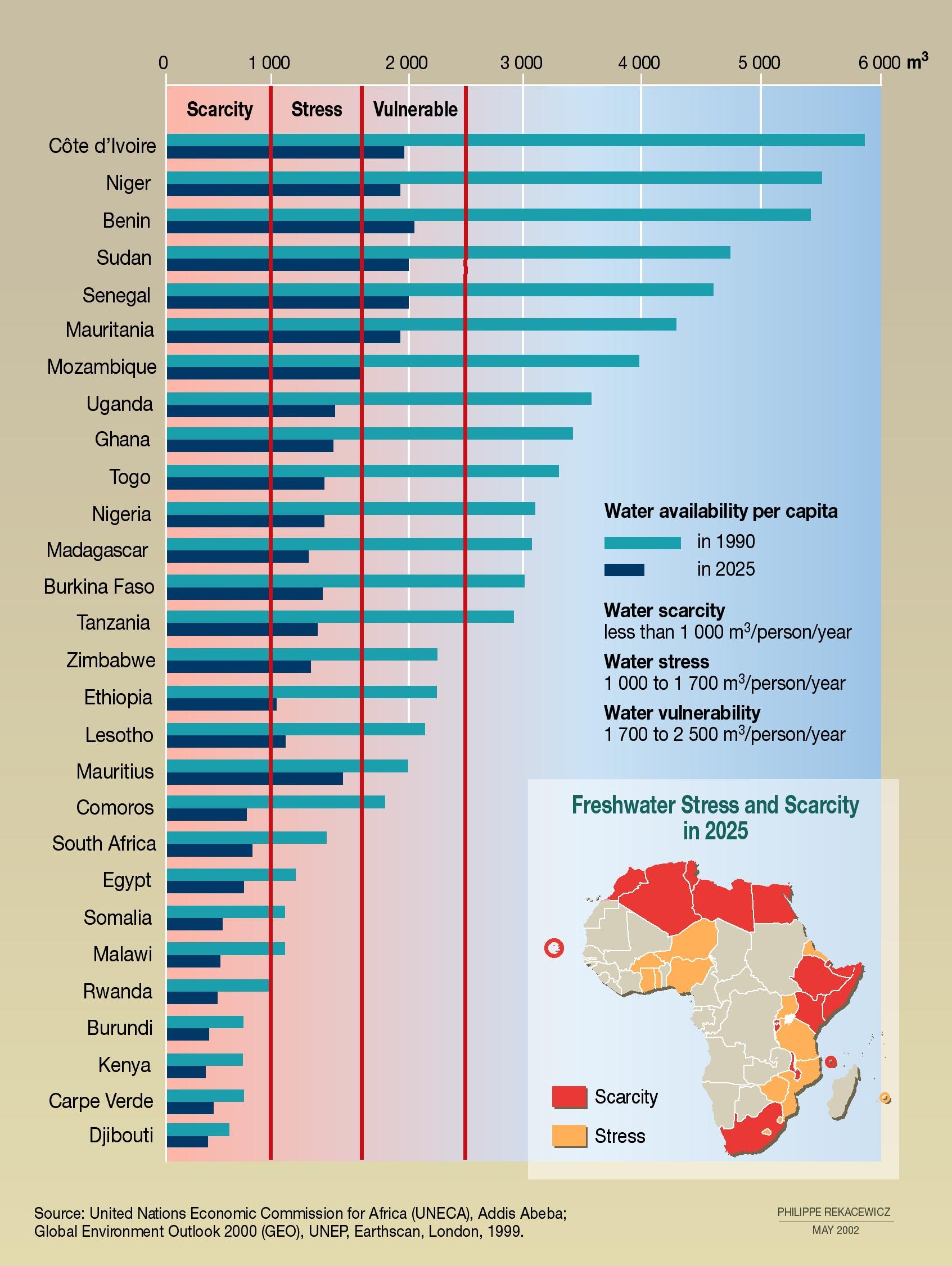BLOG
May 28th, 2012
Via The International Water Law Project, a look at Africa’s water security:

- This map, published with the original MacDonald, et.al., study, depicts potential ground water resources on the African continent. Areas in blue represent the most water-abundant areas.
Not long ago, the BBC reported (here) on vast reservoirs of ground water resources underlying the African continent and the critical use that this water could have for populations now and in the future. While the so-called “discovery†of this water wealth may be questionable (see WaterWired’s Michael Campana explaining what we already knew here), the resurgence in interest in fresh water for Africa is a critical development in itself. The MacDonald, et.al., study that started this latest brouhaha can be found here.
Africa remains one of the poorest regions in the world in terms of access to fresh water resources. A recent report by UNICEF and the World Health Organization (here) indicates that approximately 300 million people in sub-Saharan Africa are without access to safe and clean drinking water. Of the countries reported to have less than fifty-percent coverage in water supply, almost all are located in sub-Saharan Africa. Additionally, only some thirty-percent of the population in sub-Saharan Africa is blessed with improved sanitation coverage, making the region one of the most underserved in the world.
In the year 2000, the world’s major leaders came together at the United Nations Headquarters in New York to adopt the United Nations Millennium Declaration (here). The Declaration was intended to create a global partnership aimed at reducing extreme poverty throughout the world. Targets, known as the Millennium Development Goals, were set to achieve the Declaration’s aim, with a deadline for the year 2015 (see here). In sub-Saharan Africa, where some of the worst poverty and water scarcity conditions exist, only nineteen of the fifty existing countries are expected to meet the Goals’ drinking water targets by the year 2015.
Of further concern for the sub-Saharan African region is that according to the United Nations, over the next ten to fifteen years, as populations continue to expand, per capita water supplies will diminish significantly to the point where available supplies will no longer be able to meet the water needs of many of the region’s nations.
Given the troubled state of Africa’s water circumstances, a renewed focus on the significant sources of ground water underlying much of the continent comes at a very important time. In addition to concentrating attention on a dire situation, it provides opportunities for the region and the global community to explore means of overcoming the water challenges facing Africa and for sustainably developing and managing these underground resources. One of these opportunities is directly tied to the fact that many of Africa’s aquifers are transboundary, underlying two or more nations. The Nubian Sandstone Aquifer System, for example, is situated below Chad, Egypt, Libya, and Sudan; the Iullemeden Aquifer System underlays Mali, Niger and Nigeria; and the Baggara Basin aquifer is underneath Central African Republic, Sudan, and South Sudan, including the parched and war-ravaged Darfur region.
As the availability of fresh water decreases across the continent, competition and tensions over transboundary resources are likely to rise. To date, however, none of the transboundary aquifer countries in Africa have entered into an aquifer sharing or management arrangement. The only transboundary aquifer-related arrangements on the continent are two rudimentary consultative and data-sharing agreements formulated for the Nubian Sandstone and Northwestern Sahara aquifers in North Africa (you can find the texts for these arrangements here and here).

- More than seventy aquifers and aquifer systems in Africa have been identified as “transboundary†by the United Nations’ International Groundwater Resources Assessment Center. IGRAC’s Transboundary Aquifers of the World 2012 map is available here.
An attempt also was made to develop an extensive consultative and management regime for the Iullemeden Aquifer System. In 2009, the overlying nations (Mali, Niger and Nigeria) signed the Declaration of Bamako (here) and an accompanying Memorandum of Understanding for the establishment of a consultative mechanism for the management of the Iullemeden Aquifer System (here) whose goals were to: (1) identifying transboundary risks and uncertainties, (2) formulate joint risk mitigation and sharing policies, and (3) facilitate the sustainable development of the Iullemeden Aquifer System’s resources. While the arrangement contained rather progressive and thoughtful approaches and mechanisms, the effort appear to have stalled.
Given the levels of water stress and scarcity that African countries are currently experiencing, and which are predicted to increase rapidly, the need for action is immediate. Although ground water resources in Africa are vast and provide great opportunities for overcoming the continent’s water scarcity problems, the lack of information, technical capacity, adequate funding, and cooperation prevents many African nations from overcoming the water challenges facing them. Accordingly, it is crucial that all of Africa – from the national level to the most local community – develop programs that will expand the exploration of water resources, push for data-generation and sharing, and encourage cross-border cooperative and sustainable management initiatives. It is also critical that the United Nations, as well as the developed world, offer their assistance for this worthwhile effort.
The mere discovery of a new source of fresh water underlying one of another nation will not ensure it a future free of water scarcity. Only by cooperating and carefully and sustainably managing such resources will Africa’s nations be able to secure the much needed water for its communities and environment.


